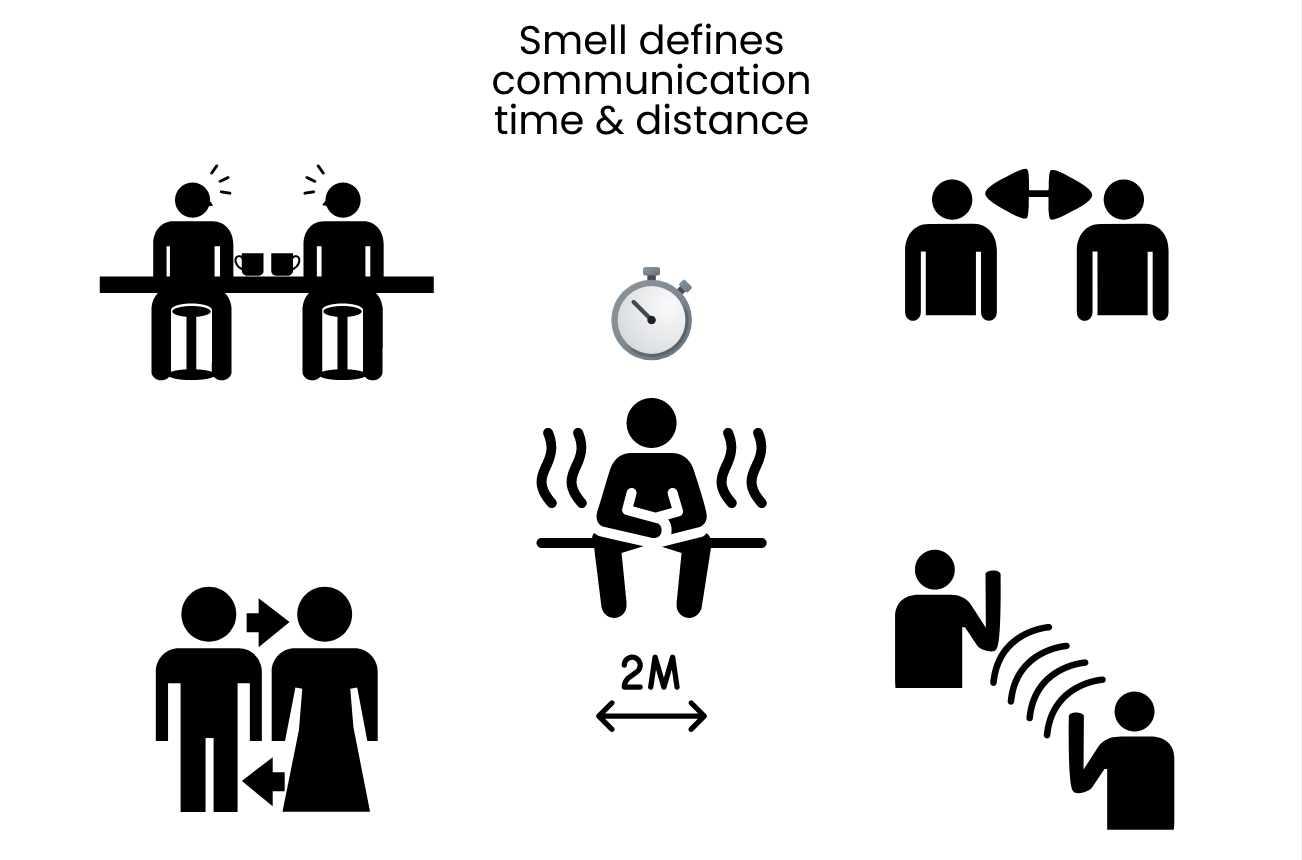
Social functions of scents
Non-verbal communication using smells
There are two main points that can be influenced by personal scent:
- ⚈ determining the distance between people
- ⚈ determining the duration of communication
The duration and comfort of communication between people can be regulated by the degree of pleasantness, concentration and intensity of the personal scent: the attractiveness of the aroma and its unobtrusiveness contribute to communication at a shorter distance and can allow for a longer conversation; conversely, bad body’s or perfume’s odor repels people and forces them to stop communicating as quickly as possible.

The concentration and intensity of the scent are especially important for life in a densely populated city. If you are on public transport during rush hour you can avert your eyes to the side or close your eyes altogether to avoid direct eye contact with a stranger, but you will not be able to hide from a penetrating personal scent - you can only hold your breath for a minute at most. Moreover, the sense of smell on a subconscious level is perceived more intimately compared to other senses, since inhaling the smell with the air goes literally inside our body - through the nose into the lungs.

The culture of body care and the development of hygiene in recent centuries is aimed at eliminating personal individual odor and reducing the smell of potentially annoying perfume. This explains the great demand for a constantly expanding range of cosmetics - from deodorants to eau de toilette and light perfume body mist. A lack of smell or its subtle presence on the one hand makes life easier in crowded cities, but on the other hand, it enhances sensitivity and sharpens the perception of smells in general, forcing them to react especially negatively to unpleasant odors, which the majority are.
One rather interesting aspect of non-verbal communication was noted in the work “Social Connotations of Smell” by E. Besschetnova (2016) and is related to the smell of the disease. As a rule, unpleasant body odor, for example, associated with a lack of sufficient personal hygiene, is perceived negatively in the vast majority of cases. But if this is associated with a serious illness, then many respondents have an increased level of tolerance in relation to the smell of a sick person and directly to themself.
See also: Physiological functions of the sense of smell and odors | Sense of smell and scents